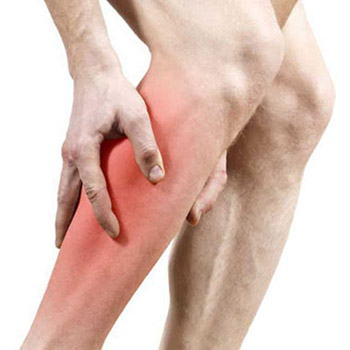Restless Legs Syndrome
Restless legs syndrome (RLS), also called Willis-Ekbom Disease, causes unpleasant or uncomfortable sensations in the legs and an irresistible urge to move them. Symptoms commonly occur in the late afternoon or evening hours, and are often most severe at night when a person is resting, such as sitting or lying in bed. They also may occur when someone is inactive and sitting for extended periods (for example, when taking a trip by plane or watching a movie). Since symptoms can increase in severity during the night, it could become difficult to fall asleep or return to sleep after waking up. Moving the legs or walking typically relieves the discomfort but the sensations often recur once the movement stops. RLS is classified as a sleep disorder since the symptoms are triggered by resting and attempting to sleep, and as a movement disorder, since people are forced to move their legs in order to relieve symptoms. It is, however, best characterized as a neurological sensory disorder with symptoms that are produced from within the brain itself.

Statistics of Restless Leg Syndrome (RLS)
Facts about Restless Leg Syndrome (RLS) Include:
RLS may affect as many as one in 10 people in the U.S.
5 million U.S. adults (about 2-3 percent) have moderate to severe RLS.
5 percent of adults have a mild form of RLS.
1 million children of school age have restless leg syndrome.
RLS affects twice as many women as men.
Moderate cases of RLS present symptoms one to two times per week.
Severe cases of RLS have symptoms more than twice per week.
80 percent of people with RLS also have periodic limb movement of sleep (PLMS).
Symptoms continue longer and become more frequent with age.
The onset of restless leg syndrome does not indicate the presence of other neurological diseases.
What are common signs and symptoms of restless legs?
A classic feature of RLS is that the symptoms are worse at night with a distinct symptom-free period in the early morning, allowing for more refreshing sleep at that time. Some people with RLS have difficulty falling asleep and staying asleep. They may also note a worsening of symptoms if their sleep is further reduced by events or activity.
RLS symptoms may vary from day to day, in severity and frequency, and from person to person. In moderately severe cases, symptoms occur only once or twice a week but often result in significant delay of sleep onset, with some disruption of daytime function. In severe cases of RLS, the symptoms occur more than twice a week and result in burdensome interruption of sleep and impairment of daytime function.


